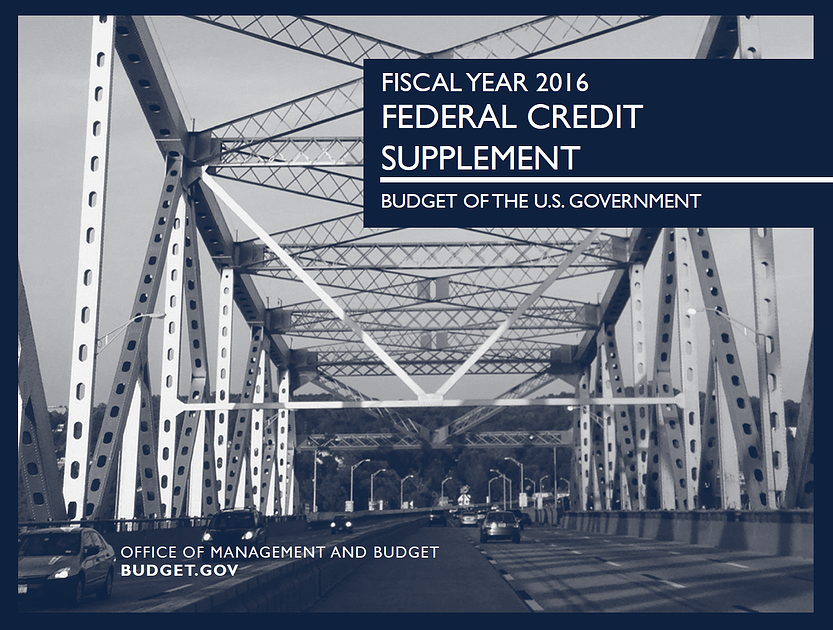Introduction to the President’s Budget Credit Supplement
April 7, 2015 •Anthony Curcio

 Each year, the President presents Congress with a formidable document that outlines his (perhaps one day, her) proposal of how Federal funds should be spent in the upcoming fiscal year. This is known as, you guessed it, “The President’s Budget.”
Each year, the President presents Congress with a formidable document that outlines his (perhaps one day, her) proposal of how Federal funds should be spent in the upcoming fiscal year. This is known as, you guessed it, “The President’s Budget.”
Due to its size, the President’s Budget is divided into many parts in order to be a useful set of documents. When printed, the President’s Budget would need a large box to contain it. The document titled “The Budget” is a high-level overview of the fiscal state of affairs, but still averages 150 pages. The Appendix, which lists every Federal account, was nearly 1,400 pages this year.
So where to begin? For practitioners in the specialized field of Federal Credit, the most important part of the President’s Budget might be the “Credit Supplement.” Thankfully this is a much more manageable document, with just 95 pages in the 2016 President’s Budget.
The Credit Supplement to the President’s Budget is designed to give specific detail on the terms and conditions of Federal loans and guarantees within Federal lending programs. It includes summary statistics (such as default rates, recovery rates, and interest rates) on Federal direct loans and guarantees and shows how these terms factor into the budgeted costs included in the overall President’s Budget. The Credit Supplement isn’t a proposal like most of the other parts of the Budget. Rather, the Credit Supplement is mostly comprised of historical summary statistics and serves as a record. Current policy decisions might be influenced by this material, but it isn’t up for debate.
Practitioners who estimate models to predict costs for Federal lending find the Credit Supplement very useful because it serves as a reference point for forecasting loan program performance. Additionally, by examining the data in the Credit Supplement, we may determine trends in loan performance, effects of policy decisions, and how changes in interest rates affect program subsidy/cost.
Summit’s team keeps an archive of historical Credit Supplements released each year in order to get a more accurate picture of how loan programs have performed in the past, with the hopes of identifying the factors that help them succeed and increasing the precision of budgeting for loan programs.
Get Updates
Featured Articles
Categories
- affordable housing (12)
- agile (3)
- AI (4)
- budget (3)
- change management (1)
- climate resilience (5)
- cloud computing (2)
- company announcements (15)
- consumer protection (3)
- COVID-19 (7)
- data analytics (82)
- data science (1)
- executive branch (4)
- fair lending (13)
- federal credit (35)
- federal finance (6)
- federal loans (6)
- federal register (2)
- financial institutions (1)
- Form 5500 (5)
- grants (1)
- healthcare (17)
- impact investing (12)
- infrastructure (13)
- LIBOR (4)
- litigation (8)
- machine learning (2)
- mechanical turk (3)
- mission-oriented finance (7)
- modeling (9)
- mortgage finance (10)
- office culture (26)
- opioid crisis (5)
- Opportunity Finance Network (4)
- opportunity zones (12)
- partnership (15)
- pay equity (5)
- predictive analytics (15)
- press coverage (3)
- program and business modernization (7)
- program evaluation (29)
- racial and social justice (8)
- real estate (2)
- risk management (10)
- rural communities (9)
- series - loan monitoring and AI (4)
- series - transforming federal lending (2)
- strength in numbers series (9)
- summer interns (7)
- taxes (7)
- thought leadership (3)
- white paper (15)



